Every year, many minor league players make changes that improve their standing in the eyes of evaluators. We're far enough along now that teams have updated reports on breakout statistical performers and have an idea as to whether the newfound success is fact or fiction. Below are notes on a player from each MLB team who is outperforming his preseason projection and whether I think the player has made substantive changes or is just enjoying a prolonged period of good fortune.
National League
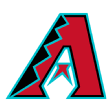 Arizona Diamondbacks: C Daulton Varsho. Varsho was crushing the ball at high-A Visalia before he fractured his hand last week. He's a twitchy, athletic catcher with plus speed and doubles power. Varsho's offensive and athletic abilities were known when he was drafted, but over the past year his athleticism and makeup have enabled him to develop as a catcher (where amateur scouts were skeptical he'd remain). He could be the first catcher to swipe 20 bags since Jason Kendall in 2000.
Arizona Diamondbacks: C Daulton Varsho. Varsho was crushing the ball at high-A Visalia before he fractured his hand last week. He's a twitchy, athletic catcher with plus speed and doubles power. Varsho's offensive and athletic abilities were known when he was drafted, but over the past year his athleticism and makeup have enabled him to develop as a catcher (where amateur scouts were skeptical he'd remain). He could be the first catcher to swipe 20 bags since Jason Kendall in 2000.
 Atlanta Braves: RHP Odalvi Javier. Javier has accrued an impressive 75 K's in 67 innings as a 20-year-old in A-ball by consistently locating an above-average slider down and away to right-handed hitters. His velocity also sits around 90-94 mph, but Javier's mature 6-foot frame indicates little, if any, future fastball growth, and his cross-bodied, low-slot delivery might create platoon issues against lefties unless he develops a changeup. He's a prospect, just probably one ticketed for a relief role.
Atlanta Braves: RHP Odalvi Javier. Javier has accrued an impressive 75 K's in 67 innings as a 20-year-old in A-ball by consistently locating an above-average slider down and away to right-handed hitters. His velocity also sits around 90-94 mph, but Javier's mature 6-foot frame indicates little, if any, future fastball growth, and his cross-bodied, low-slot delivery might create platoon issues against lefties unless he develops a changeup. He's a prospect, just probably one ticketed for a relief role.
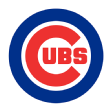 Chicago Cubs: C Miguel Amaya. Teams were asking about Amaya ahead of last year's trade deadline even though he wasn't putting up good numbers. They loved his advanced glove and could see that he had offensive potential that was being suppressed by the physical rigors of catching. He's hitting .270/.350/.470 as a teenager at low-A.
Chicago Cubs: C Miguel Amaya. Teams were asking about Amaya ahead of last year's trade deadline even though he wasn't putting up good numbers. They loved his advanced glove and could see that he had offensive potential that was being suppressed by the physical rigors of catching. He's hitting .270/.350/.470 as a teenager at low-A.
 Cincinnati Reds: C Hendrik Clementina. Clementina began the season on a godlike tear, slashing .390/.480/.814 during the first month. He has since cooled off significantly, hitting .250/.308/.411. He's a catcher with power and is a good enough receiver to play behind the plate, though his fringe arm strength plays down because of how slowly Clementina gets out of his crouch. He's also a bucket strider with middling breaking ball recognition, leaving him vulnerable on the outer half of the plate.
Cincinnati Reds: C Hendrik Clementina. Clementina began the season on a godlike tear, slashing .390/.480/.814 during the first month. He has since cooled off significantly, hitting .250/.308/.411. He's a catcher with power and is a good enough receiver to play behind the plate, though his fringe arm strength plays down because of how slowly Clementina gets out of his crouch. He's also a bucket strider with middling breaking ball recognition, leaving him vulnerable on the outer half of the plate.
 Colorado Rockies: 1B Chad Spanberger. Spanberger was the club's sixth-rounder last year and owns a .295/.338/.580 line with 18 homers in just under 70 games. Spanberger has real plus-plus raw power. For an SEC college draftee, his track record of success is somewhat limited, as he didn't really take off until the SEC tournament late in his draft year. He's a big-conference college hitter performing at low-A for an Asheville affiliate that is notorious for muting offensive abilities.
Colorado Rockies: 1B Chad Spanberger. Spanberger was the club's sixth-rounder last year and owns a .295/.338/.580 line with 18 homers in just under 70 games. Spanberger has real plus-plus raw power. For an SEC college draftee, his track record of success is somewhat limited, as he didn't really take off until the SEC tournament late in his draft year. He's a big-conference college hitter performing at low-A for an Asheville affiliate that is notorious for muting offensive abilities.
 Los Angeles Dodgers: SS Gavin Lux. Lux was drafted as a light-hitting shortstop and was tracking as such throughout his first two pro seasons. But this year, he's slugging a whopping .515, up from .362 in 2017. Some of that is driven by the California League's hitting environment, but note that Lux's ground ball rate has dropped from 52 percent to 38 percent, so he's also hitting the ball in the air more, a sign that he's made a swing change, too.
Los Angeles Dodgers: SS Gavin Lux. Lux was drafted as a light-hitting shortstop and was tracking as such throughout his first two pro seasons. But this year, he's slugging a whopping .515, up from .362 in 2017. Some of that is driven by the California League's hitting environment, but note that Lux's ground ball rate has dropped from 52 percent to 38 percent, so he's also hitting the ball in the air more, a sign that he's made a swing change, too.
 Miami Marlins: SS Jose Devers. I'm at odds with some of my scouting contacts regarding Devers, whom the Marlins acquired from the Yankees as part of the Giancarlo Stanton trade. Industry opinions often have Devers pegged as a fringe regular due to his lack of physicality and perceived power potential, but this is an 18-year-old striking out just 13 percent of the time in full-season ball, and the scouting reports about his bat-to-ball skills support that performance. If Devers is a plus runner who stays in the middle infield and has a plus or better bat, he doesn't need to hit for much power to be a valuable regular. I'm buying.
Miami Marlins: SS Jose Devers. I'm at odds with some of my scouting contacts regarding Devers, whom the Marlins acquired from the Yankees as part of the Giancarlo Stanton trade. Industry opinions often have Devers pegged as a fringe regular due to his lack of physicality and perceived power potential, but this is an 18-year-old striking out just 13 percent of the time in full-season ball, and the scouting reports about his bat-to-ball skills support that performance. If Devers is a plus runner who stays in the middle infield and has a plus or better bat, he doesn't need to hit for much power to be a valuable regular. I'm buying.
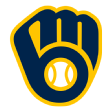 Milwaukee Brewers: RHP Zack Brown. Though his violent delivery might ultimately drive him to the bullpen, Brown has three pitches that are above average or better -- a 93-96 mph heater, a plus slider and a 55-grade changeup -- good enough for a rotation spot. He has a 2.50 ERA at Double-A. I still have him projected in relief but in high-leverage roles.
Milwaukee Brewers: RHP Zack Brown. Though his violent delivery might ultimately drive him to the bullpen, Brown has three pitches that are above average or better -- a 93-96 mph heater, a plus slider and a 55-grade changeup -- good enough for a rotation spot. He has a 2.50 ERA at Double-A. I still have him projected in relief but in high-leverage roles.
 New York Mets: 1B Peter Alonso. You could argue that Alonso's breakout season came last year when teams started to consider him an average future big league first baseman, until Alonso's huge start to 2018 -- his walk rate has doubled, and he has reached Triple-A. That stomped out trepidation (including my own) that he was an older hitter beating up on A-ball pitching. Alonso rakes, but beware of his defense.
New York Mets: 1B Peter Alonso. You could argue that Alonso's breakout season came last year when teams started to consider him an average future big league first baseman, until Alonso's huge start to 2018 -- his walk rate has doubled, and he has reached Triple-A. That stomped out trepidation (including my own) that he was an older hitter beating up on A-ball pitching. Alonso rakes, but beware of his defense.
 Philadelphia Phillies: LHP Bailey Falter. The Phillies have several pitchers in the midst of breakout seasons, but Falter is striking out a batter per inning at high-A despite mediocre fastball velocity and average secondary stuff, in part because his huge stride down the mound causes his stuff to jump on hitters sooner than they expect. This natural deception doesn't detract from Falter's command and helps otherwise fringe stuff play up to a level that could work in the back end of a big league rotation. His ceiling is limited, but Falter has big league traits.
Philadelphia Phillies: LHP Bailey Falter. The Phillies have several pitchers in the midst of breakout seasons, but Falter is striking out a batter per inning at high-A despite mediocre fastball velocity and average secondary stuff, in part because his huge stride down the mound causes his stuff to jump on hitters sooner than they expect. This natural deception doesn't detract from Falter's command and helps otherwise fringe stuff play up to a level that could work in the back end of a big league rotation. His ceiling is limited, but Falter has big league traits.
 Pittsburgh Pirates: SS/freak of nature Oneil Cruz. The 19-year-old Cruz might be baseball's most unique physical specimen. He's a power-hitting shortstop with elite arm strength who stands 6-foot-6 in his spikes. Hitters this size typically have strikeout issues, and Cruz does, but he's getting to his power (which could be elite grade at maturity) and has some convinced that he'll stay in the infield.
Pittsburgh Pirates: SS/freak of nature Oneil Cruz. The 19-year-old Cruz might be baseball's most unique physical specimen. He's a power-hitting shortstop with elite arm strength who stands 6-foot-6 in his spikes. Hitters this size typically have strikeout issues, and Cruz does, but he's getting to his power (which could be elite grade at maturity) and has some convinced that he'll stay in the infield.
 St. Louis Cardinals: 3B Elehuris Montero. Montero performed in the GCL last year and skipped over the Cardinals' other two short-season affiliates right to low-A, where he's crushing the ball to all fields at age 19. He may not be a third baseman long term, but his bat and especially his power are for real.
St. Louis Cardinals: 3B Elehuris Montero. Montero performed in the GCL last year and skipped over the Cardinals' other two short-season affiliates right to low-A, where he's crushing the ball to all fields at age 19. He may not be a third baseman long term, but his bat and especially his power are for real.
 San Diego Padres: OF Tirso Ornelas. Ornelas is one of the most polished 18-year-old hitters on the planet, and he's displaying remarkable control of the strike zone at low-A Fort Wayne, where he has nearly as many walks as strikeouts. His frame is relatively mature (though he's in much better shape now than when he signed), so he likely won't grow into huge raw power, but he might square the ball up often enough to produce in-game power anyway.
San Diego Padres: OF Tirso Ornelas. Ornelas is one of the most polished 18-year-old hitters on the planet, and he's displaying remarkable control of the strike zone at low-A Fort Wayne, where he has nearly as many walks as strikeouts. His frame is relatively mature (though he's in much better shape now than when he signed), so he likely won't grow into huge raw power, but he might square the ball up often enough to produce in-game power anyway.
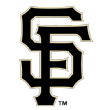 San Francisco Giants: 2B Jalen Miller. Miller was San Francisco's third-rounder in 2015 as a hit-first high school second baseman. He posted a 70 wRC+ in each of his first three pro seasons and was close to being dismissed as a prospect, but he is now hitting .290/.330/.450 at high-A. There hasn't been much movement in any of Miller's peripherals or batted-ball profile, and much of this could be BABIP and Cal League-driven. While Miller's talent makes him worth monitoring, I'm skeptical of this breakout.
San Francisco Giants: 2B Jalen Miller. Miller was San Francisco's third-rounder in 2015 as a hit-first high school second baseman. He posted a 70 wRC+ in each of his first three pro seasons and was close to being dismissed as a prospect, but he is now hitting .290/.330/.450 at high-A. There hasn't been much movement in any of Miller's peripherals or batted-ball profile, and much of this could be BABIP and Cal League-driven. While Miller's talent makes him worth monitoring, I'm skeptical of this breakout.
 Washington Nationals: 2B Luis Garcia. The Nationals system hasn't had a dominant under-the-radar performer this year, so here's another teenager whose ability to put the bat on the ball is more impressive when viewed relative to his age (18). Garcia is hitting .280 in a full-season league while his domestic peers are at prom. He's a thick-bodied kid, but he should stay at second base if he keeps his frame in check. He has so far.
Washington Nationals: 2B Luis Garcia. The Nationals system hasn't had a dominant under-the-radar performer this year, so here's another teenager whose ability to put the bat on the ball is more impressive when viewed relative to his age (18). Garcia is hitting .280 in a full-season league while his domestic peers are at prom. He's a thick-bodied kid, but he should stay at second base if he keeps his frame in check. He has so far.
American League
 Baltimore Orioles: CF Ryan McKenna. McKenna's stat line is preposterous. He was hitting a Trout-ish .377/.467/.556 at high-A before his promotion to Double-A. McKenna's .436 BABIP indicates that a significant regression is coming, but he has made some changes to his swing that include adding a leg kick and choking up on the bat at all times instead of just with two strikes like he used to. Some of this movement is real.
Baltimore Orioles: CF Ryan McKenna. McKenna's stat line is preposterous. He was hitting a Trout-ish .377/.467/.556 at high-A before his promotion to Double-A. McKenna's .436 BABIP indicates that a significant regression is coming, but he has made some changes to his swing that include adding a leg kick and choking up on the bat at all times instead of just with two strikes like he used to. Some of this movement is real.
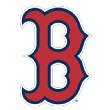 Boston Red Sox: SS C.J. Chatham. Good health has enabled Chatham to play in more games this season than he has in either of his previous two injury-riddled pro campaigns. He's a long-levered shortstop with good bat-to-ball skills and could play a low-end everyday or utility role.
Boston Red Sox: SS C.J. Chatham. Good health has enabled Chatham to play in more games this season than he has in either of his previous two injury-riddled pro campaigns. He's a long-levered shortstop with good bat-to-ball skills and could play a low-end everyday or utility role.
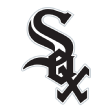 Chicago White Sox: All the outfielders. Much attention has been paid to the crowded White Sox A-ball outfield situation because Luis Robert is now part of the picture. All of them are performing -- some of them are for real. Power bat Micker Adolfo continues to hit at high-A despite playing through an injury that has limited him to DH. Luis Alexander Basabe is hitting for strength-driven power and walking. He's also a plus runner. I'm buying both of those guys. The performance of 2017 third-rounder Luis Gonzalez is encouraging, but he still might just be a contact-oriented corner bat without much ceiling. Blake Rutherford's slugging percentage is way up, but Rutherford is still hitting the ball on the ground a lot, and I'm skeptical of his bounce-back.
Chicago White Sox: All the outfielders. Much attention has been paid to the crowded White Sox A-ball outfield situation because Luis Robert is now part of the picture. All of them are performing -- some of them are for real. Power bat Micker Adolfo continues to hit at high-A despite playing through an injury that has limited him to DH. Luis Alexander Basabe is hitting for strength-driven power and walking. He's also a plus runner. I'm buying both of those guys. The performance of 2017 third-rounder Luis Gonzalez is encouraging, but he still might just be a contact-oriented corner bat without much ceiling. Blake Rutherford's slugging percentage is way up, but Rutherford is still hitting the ball on the ground a lot, and I'm skeptical of his bounce-back.
 Cleveland Indians: RHP Eli Morgan. You're right to be skeptical of a college arm succeeding in A-ball, but that was Shane Bieber last year, and this season it's Morgan. Morgan's changeup is a plus-plus offering and a dominant pitch, one that will miss big leagues bats.
Cleveland Indians: RHP Eli Morgan. You're right to be skeptical of a college arm succeeding in A-ball, but that was Shane Bieber last year, and this season it's Morgan. Morgan's changeup is a plus-plus offering and a dominant pitch, one that will miss big leagues bats.
 Detroit Tigers: RHP Elvin Rodriguez. The Tigers poached a few interesting teenage arms from the Angels in the Justin Upton/Ian Kinsler swaps of 2017 and Rodriguez is one of them. He's a pitchability righty with a frame that portends an uptick in velocity, which he's already begun to experience. His performance at low-A Western Michigan (with more K's than innings pitched) is more impressive when you consider that the 20-year-old was pitching in freezing weather early in the season after spending his entire life in the Dominican Republic and American Southwest.
Detroit Tigers: RHP Elvin Rodriguez. The Tigers poached a few interesting teenage arms from the Angels in the Justin Upton/Ian Kinsler swaps of 2017 and Rodriguez is one of them. He's a pitchability righty with a frame that portends an uptick in velocity, which he's already begun to experience. His performance at low-A Western Michigan (with more K's than innings pitched) is more impressive when you consider that the 20-year-old was pitching in freezing weather early in the season after spending his entire life in the Dominican Republic and American Southwest.
 Houston Astros: RHP Josh James. We could talk about a lot of Astros players in this space because the organization is so good at making pitching prospects more spin-efficient through use of high-speed Edgertronic cameras and implementation of more coherent plans of attack for their pitchers. James has struck out 96 hitters in 62 innings between Double-A and Triple-A. His velocity has ticked up each of the past three years and now resides in the mid-90s while his breaking stuff misses bats when it's located. He might "just" be a big league reliever, but he might be a very good one. For a 34th-round pick, that is an excellent outcome.
Houston Astros: RHP Josh James. We could talk about a lot of Astros players in this space because the organization is so good at making pitching prospects more spin-efficient through use of high-speed Edgertronic cameras and implementation of more coherent plans of attack for their pitchers. James has struck out 96 hitters in 62 innings between Double-A and Triple-A. His velocity has ticked up each of the past three years and now resides in the mid-90s while his breaking stuff misses bats when it's located. He might "just" be a big league reliever, but he might be a very good one. For a 34th-round pick, that is an excellent outcome.
 Kansas City Royals: Utilityman D.J. Burt. Little 5-foot-9 Burt has been a scout favorite for a while because of his fundamental competence and hustle. His tools limit his ceiling, but Burt can really run, he plays all over the field and he has great feel for the strike zone. He is looking like a high-energy big league bench piece.
Kansas City Royals: Utilityman D.J. Burt. Little 5-foot-9 Burt has been a scout favorite for a while because of his fundamental competence and hustle. His tools limit his ceiling, but Burt can really run, he plays all over the field and he has great feel for the strike zone. He is looking like a high-energy big league bench piece.
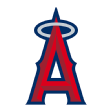 Los Angeles Angels: 3B Taylor Ward. Ward's career progression has been odd. He was drafted as a glove-first catcher but wasn't great there as a pro. He was walking a lot but making weak opposite-field contact when he'd swing. He was generally considered a non-prospect by pro scouts. This year Ward has moved to third base, added a bigger leg kick, lowered where his hands load and is swinging more aggressively. The results have been positive, though his rate of home run per fly ball is due for a regression.
Los Angeles Angels: 3B Taylor Ward. Ward's career progression has been odd. He was drafted as a glove-first catcher but wasn't great there as a pro. He was walking a lot but making weak opposite-field contact when he'd swing. He was generally considered a non-prospect by pro scouts. This year Ward has moved to third base, added a bigger leg kick, lowered where his hands load and is swinging more aggressively. The results have been positive, though his rate of home run per fly ball is due for a regression.
 Minnesota Twins: DH Willians Astudillo. I hope Twins fans don't feel shortchanged by my inclusion of a 5-foot-9, 26-year-old guy with no set position (he catches and plays the infield corners), but Astudillo has been one of baseball's most interesting hitters for almost a decade. He's nearly impossible to strike out (with a career strikeout rate of 3.6 percent) and he has moved his batted-ball profile pretty significantly over the past two years, which might indicate that Astudillo is finding a hit/angle sweet spot that will finally enable him to carve out a big league role.
Minnesota Twins: DH Willians Astudillo. I hope Twins fans don't feel shortchanged by my inclusion of a 5-foot-9, 26-year-old guy with no set position (he catches and plays the infield corners), but Astudillo has been one of baseball's most interesting hitters for almost a decade. He's nearly impossible to strike out (with a career strikeout rate of 3.6 percent) and he has moved his batted-ball profile pretty significantly over the past two years, which might indicate that Astudillo is finding a hit/angle sweet spot that will finally enable him to carve out a big league role.
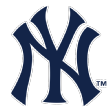 New York Yankees: RHP Trevor Stephan. The Yankees' player development department has improved the stock of nearly every arm it touches, and Stephan, who has 79 K's in 66 innings and a 2.32 ERA, looks like this year's big mover -- on paper. I still consider him to be of high relief risk as far as his future role due to the extreme cross-body nature of his delivery, but he could be dominant out of the pen.
New York Yankees: RHP Trevor Stephan. The Yankees' player development department has improved the stock of nearly every arm it touches, and Stephan, who has 79 K's in 66 innings and a 2.32 ERA, looks like this year's big mover -- on paper. I still consider him to be of high relief risk as far as his future role due to the extreme cross-body nature of his delivery, but he could be dominant out of the pen.
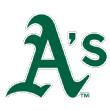 Oakland Athletics: RHP Brian Howard. Howard has average stuff, but his lanky 6-foot-9 frame creates awkward angles for hitters to deal with, and Howard is a polished pitch-sequencer. He was off prospect radars entering the season (including mine, until I saw him during the spring) but is a likely big leaguer, possibly even as a rotation piece.
Oakland Athletics: RHP Brian Howard. Howard has average stuff, but his lanky 6-foot-9 frame creates awkward angles for hitters to deal with, and Howard is a polished pitch-sequencer. He was off prospect radars entering the season (including mine, until I saw him during the spring) but is a likely big leaguer, possibly even as a rotation piece.
 Seattle Mariners: SS/2B Bryson Brigman. I was a huge Brigman fan when he was at San Diego, but he hasn't hit in pro ball until this year, as a 23-year-old in the Cal League. There's no clear change here that would indicate this newfound success is the result of a mechanical or physical change, so while Brigman's performance is encouraging, I'm not ready to hop back on the bandwagon just yet.
Seattle Mariners: SS/2B Bryson Brigman. I was a huge Brigman fan when he was at San Diego, but he hasn't hit in pro ball until this year, as a 23-year-old in the Cal League. There's no clear change here that would indicate this newfound success is the result of a mechanical or physical change, so while Brigman's performance is encouraging, I'm not ready to hop back on the bandwagon just yet.
 Tampa Bay Rays: 1B Nathaniel Lowe. Juxtaposed against Ryan McKenna's newer leg kick is Lowe, who ditched his kick in favor of more conservative footwork. Lowe's power is in his hands and wrists, not his legs, and the more conservative footwork has helped his timing and cut his strikeout rate. He has power worthy of first base, and now it looks like he has the contact skills for it, too.
Tampa Bay Rays: 1B Nathaniel Lowe. Juxtaposed against Ryan McKenna's newer leg kick is Lowe, who ditched his kick in favor of more conservative footwork. Lowe's power is in his hands and wrists, not his legs, and the more conservative footwork has helped his timing and cut his strikeout rate. He has power worthy of first base, and now it looks like he has the contact skills for it, too.
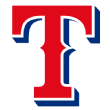 Texas Rangers: LHP Jeff Springs. Springs has struck out 81 hitters in 43 innings split between Double-A and Triple-A. That wasn't a typo. His velocity is up a tick and comfortably in the mid-90s while his changeup is a plus pitch and his slider fringy. That looks like a generic middle reliever on a scouting report, but there's clearly something about Springs' delivery that makes hitters very uncomfortable, as he has missed bats at a higher rate than his stuff would indicate for two seasons now. He's likely a reliever, but there's something going on that's hard to see; it's difficult to say what kind of bullpen role he might fit into if big leaguers struggle to pick up the baseball out of his hand the way upper-level minor leaguers are doing.
Texas Rangers: LHP Jeff Springs. Springs has struck out 81 hitters in 43 innings split between Double-A and Triple-A. That wasn't a typo. His velocity is up a tick and comfortably in the mid-90s while his changeup is a plus pitch and his slider fringy. That looks like a generic middle reliever on a scouting report, but there's clearly something about Springs' delivery that makes hitters very uncomfortable, as he has missed bats at a higher rate than his stuff would indicate for two seasons now. He's likely a reliever, but there's something going on that's hard to see; it's difficult to say what kind of bullpen role he might fit into if big leaguers struggle to pick up the baseball out of his hand the way upper-level minor leaguers are doing.
 Toronto Blue Jays: 2B Cavan Biggio. Biggio has altered the position of his hands, which used to reside in the Craig Counsell/Mike Aviles territory as they loaded, and lowered them to a spot that resembles where Chase Utley's hands are in his setup. The result? He's hitting for significantly more power this season.
Toronto Blue Jays: 2B Cavan Biggio. Biggio has altered the position of his hands, which used to reside in the Craig Counsell/Mike Aviles territory as they loaded, and lowered them to a spot that resembles where Chase Utley's hands are in his setup. The result? He's hitting for significantly more power this season.
